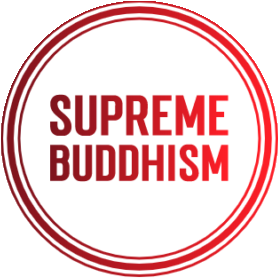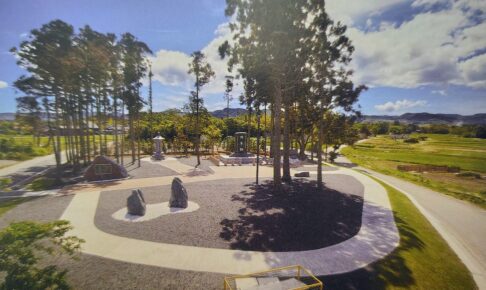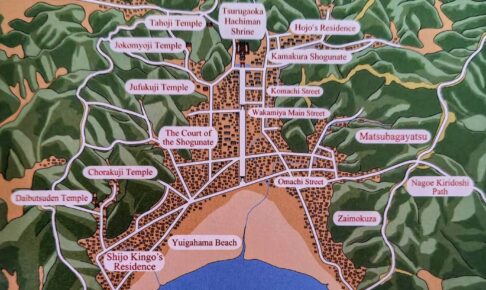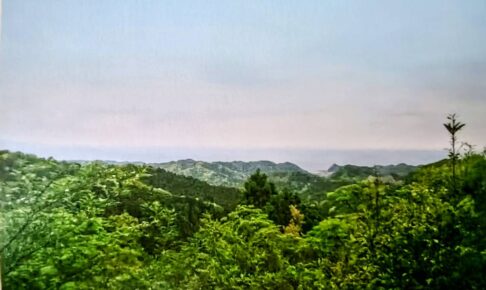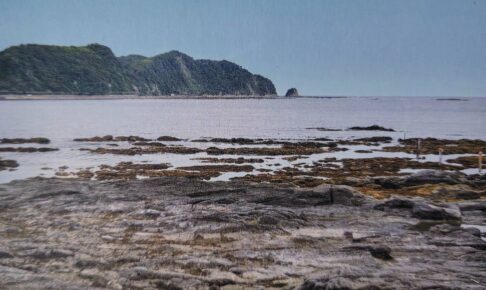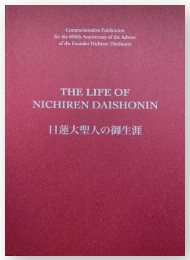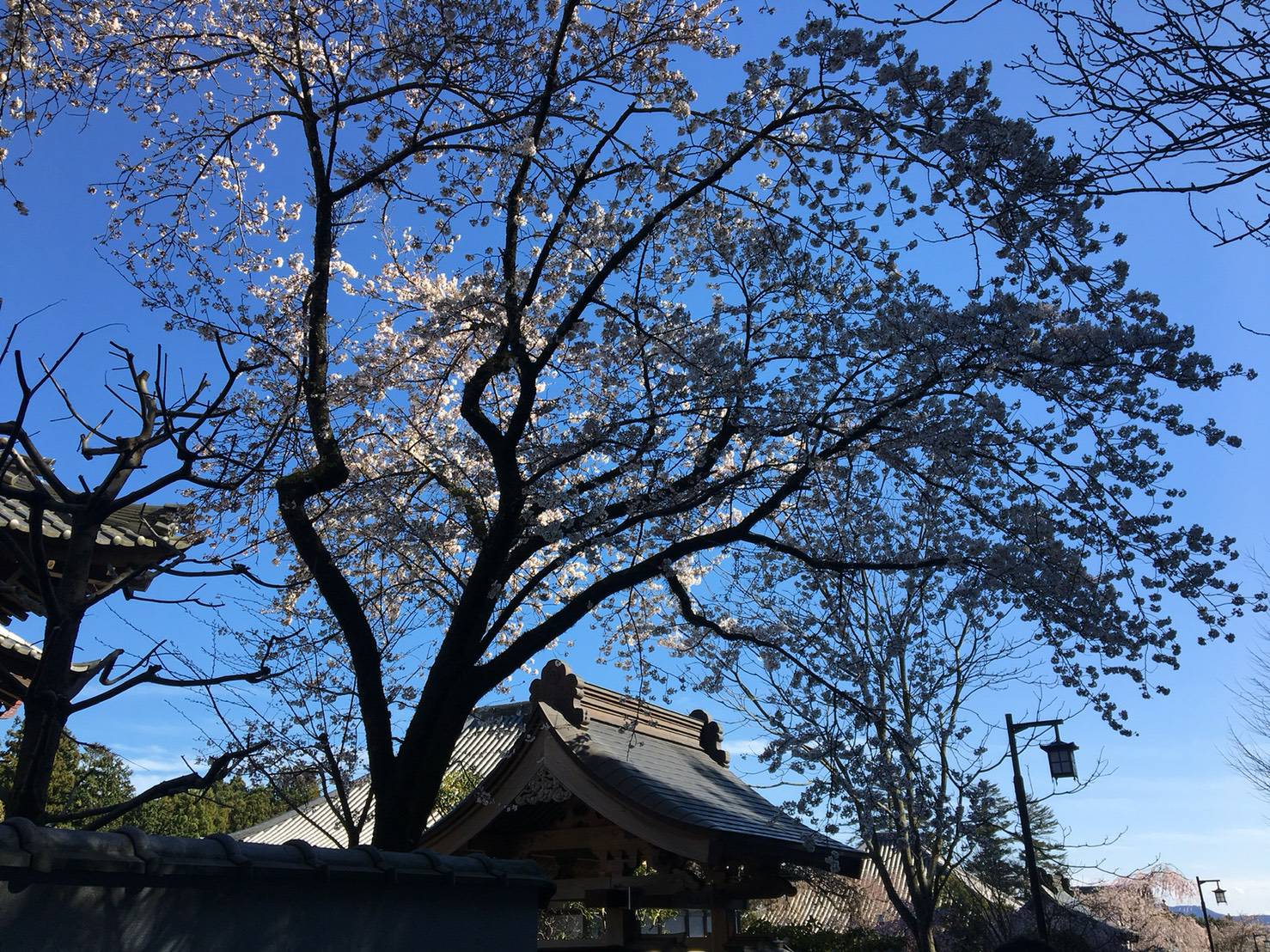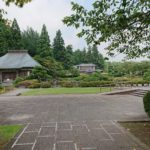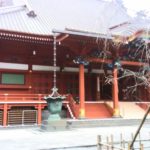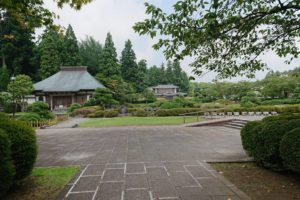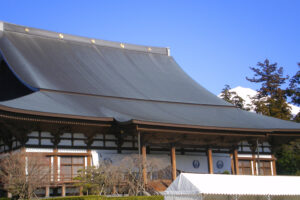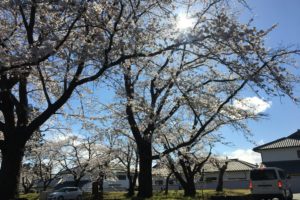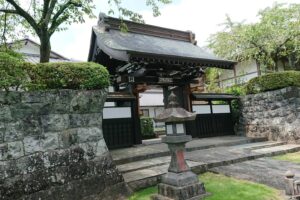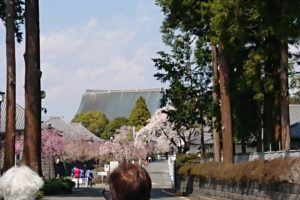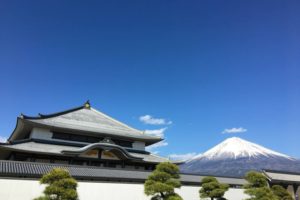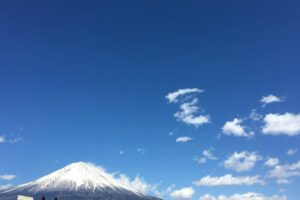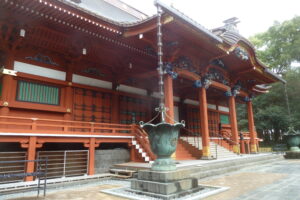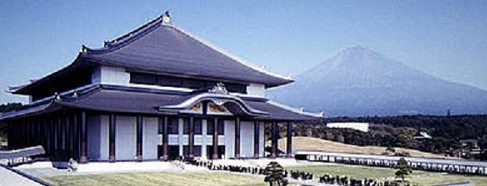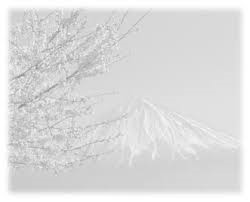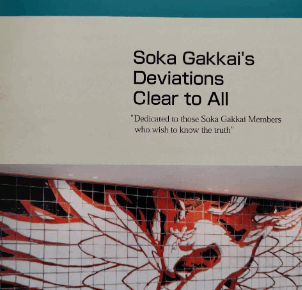This year, we have focused each sermon on one of the ten stages of the treatise, “On Securing the Peace of the Land through the Propagation of True Buddhism” (Rissho ankoku-ron) We have finally come upon the final, tenth stage.
The opening section of the Rissho ankoku-ron vividly illustrates the miserable suffering experienced by the people in Japan during the Kamakura period (1185-1382).We must not forget that even today, these same forms of hardships and suffering are experienced by people around the world.
Nichiren Daishonin looked upon those miserable conditions and wrote the treatise, “On Securing the Peace of the Land through the Propagation of True Buddhism” (Rissho ankoku-ron). His purpose was to give instruction to Hojo Tokiyori, the most powerful statesman of the time, and to all humanity in the Latter Day of the Law, The Daishonin taught about the origin of human suffering and how to resolve such misery, once the cause is determined. He explained that, because the nation was plagued with erroneous doctrines and heretical teachings, all the guardian deities in charge of protecting the nation returned to the heavens and abandoned their Protective functions.(This is the doctrine of the guardian deities ascending to the heavens]. As a result, the people were overcome by natural disasters. famine and epidemics. Civil strife occurred ubiquitously, chaos reigned in society, and desolation increasingly consumed the people’s lives.
People who were ignorant of the teachings of True Buddhism sought to explain this misfortune and suffering by attributing the cause to natural phenomena, such as floods, droughts, hurricanes. They also found pan, major such cause in wars .The Daishonin, however, delved further and focused upon the attitude of the people and, in particular, their attitude towards faith.This represents a unique quality that distinguishes the Daishonin’s perspective from all other views.
Erroneous teachings lead people to desolation.We must give serious thought to the fact that the protection of the guardian deities does not extend to any site where such people exist.Since, the primary task is to denounce the erroneous teachings and the heretical doctrines that lead people into desolation.
What, then, characterizes heresy? It is none other than the denigration of the Lotus Sutra, which was expounded by the Buddha as the true purpose of his advent into this world.
Indeed, there are ideologies and religions in the world that intentionally set out to propound evil doctrines. It is frequently the case, however, that people intend to uphold Buddhism but instead hold a distorted view that renders the doctrines themselves heretical.
For example, during the lifetime of the Daishonin, the teachings of Nembutsu and Zen were extremely popular Buddhist sects. These doctrines were expounded by the Buddha as expedients in the process of leading people to the Lotus Sutra, the true purpose of his advent. People, then and now, are unable to achieve salvation through expedient teachings.Refusing to embrace the Lotus Sutra, which expounds the truth, and upholding the expedient teachings of Nembutsu and Zen are direct characterizations of heresy.
Summary of the Ninth Stage
By the ninth question and answer exchange, the guest finally believed the instructions expounded by the host. He understood the rationale behind the view that the permeation of heresy in the world caused suffering for the people.
The host further referenced the sutras, and then addressed Tokiyori, the nation’s most powerful figure at the time.This was more than simply addressing the guest.The host (the Daishonin) predicted that the permeation of evil doctrines would cause Japan to inevitably suffer from two calamities in the future foreign invasion and internal strife. Nine years later, the Mongols sent a threatening notice to Japan. Then, they attacked Japan twice, in 1274 and 1281. Moreover, Hojo Tokisuke revolted against his brother, the Regent Hojo Tokimune, thus fulfilling the prophecies of foreign invasion and internal strife.In time, this led to the collapse of the Hojo feudal regime.History has shown that the issues expounded by the Daishonin in the Rissho ankoku-ron were definitely not unfounded allegations or fabricated tales.
Next, the host referenced the sutras to repeatedly show the true gravity of the consequences of slandering True Buddhism. He stated:
You must quickly reform the tenets that you hold in your heart and embrace the one true vehicle, the single good doctrine of the Lotus Sutra.
Thus, he urged the guest to embrace the Lotus Sutra , the one and only True Buddhism.
The Tenth Stage
The host had given the guest instruction on the true path to human salvation.The guest responded by giving his determinations for his present life and future lifetimes.The treatise then ended, without the host’s response.The guest swords directly reflected the spirit of the host. Thus, it was unnecessary for the host to say anything further.
The guest indicated how the passages referenced by the host showed him that slandering True Buddhism was an extremely grave offense and that violating the Law was in truth a terrible sin.
The guest further stated that the reason he sought salvation from Amida Buddha and had deep faith in the three Pure Land Sutras was because of his belief that there were no significant differences among the Buddhist teachings, He also based his faith on words of Honen, Nembutsu doctrines, and of eminent men of China, such and Shan-tao. All the persons in the ten directions-throughout Japan, who sincerely believed in the Nembutsu, were like him. They did not make a thorough the merits and demerits of the lifetime. teachings of the Buddha, and then decide to believe in the three Pure Land sutras. These people who believed in the teachings of Nembutsu were just following the trends in society .
The Daishonin explained in the Rissho ankoku-ron that an ignorant attitude, this, held by people who do not propound the merits and demerits of a teaching, functions to bring forth the three calamities and seven disasters and causes suffering for people throughout the realm.
In the next passage, the guest used the phrase, “to exhaust oneself in futile efforts in this life.” In precise terms, these “efforts” referred to “sincere, pure efforts.” This means that the spirit inherent in all people is in itself pure- originally pure. , the permeation of erroneous teachings, such as the Nembutsu, corrupts and distorts this pristine spirit. As a consequence, these people are doomed to fall into the hell of incessant suffering in the life to come.
The Daishonin presented the following verse:
Rain, The wind drives the rain to pound on the shutters In the dark of the night.(Misawa gobo gohenji, “Reply to Misawa,” Gosho, p. 762)
Indeed, rain never begins by falling. horizontally.It falls straight down from the sky, but it is blown about and distorted the wind.This poem describes how the windblown rain beats against the shutters at night.Not one person was ever a criminal at birth.There have been people, however , who gradually steep themselves in evil activity In the course of their lives.
Another popular verse is the following:
An infant slowly learns the cunning ways of life, Unfortunate is he, as he gradually grows distant from the Buddha.
Everyone agrees that the eyes of an infant are unclouded; they Are clear and beautiful.As the child grows older, however, he is influenced by various occurrences in his life.Eventually, his clear and unclouded eyes, resembling those of the Buddha, may become dull and lackluster. In the treatise, “On Securing the Peace of the Land through the Propagation of True Buddhism”
(Rissho ankoku-ron), the Daishonin explained the supreme significance of upholding correct faith and practice in True Buddhism.
Finally, the Daishonin essentially urged Hojo Tokiyori, the man who held actual power in Japan, to promptly uphold and believe in the teaching so compassionately presented by the host, and to open the mind of the uninformed, as enhance by the guest, to eliminate erroneous teachings and religions and to promptly bring about a world of true peace and tranquility. Unlike the Nembutsu doctrine, which instructed people to pray for salvation after death, the teaching of Nichiren Daishonin urges individuals to pray for happiness and serenity during this lifetime to assure the attainment of enlightenment at death and thereafter.
The final statement in the Rissho ankoku-ron reads:
But it is not enough that I alone should accept and have faith in your words- we must see to it that others as well are warned of their errors!
This conclusion carries the most essential directions Indeed, through his teachings, the Daishonin instructed us that beyond praying for our own joy and serenity, we must also lead others to happiness.Doing this will promote our own happiness.
Our High Priest has given us directions for “each Hokkeko believer to achieve one shakubuku per year.” As priests and lay believers who embrace True Buddhism, we can accomplish the objective set forth in the Rissho ankoku-ron by being constantly mindful of doing compassionate shakubuku.
